IRI: Ranking the top 10 IndyCar drivers of the last decade
Last year, Twin Checkers created the IndyCar Ratings Index. Now chronicling data back to 2013, let's look at the top ten drivers in the last decade of IndyCar racing.
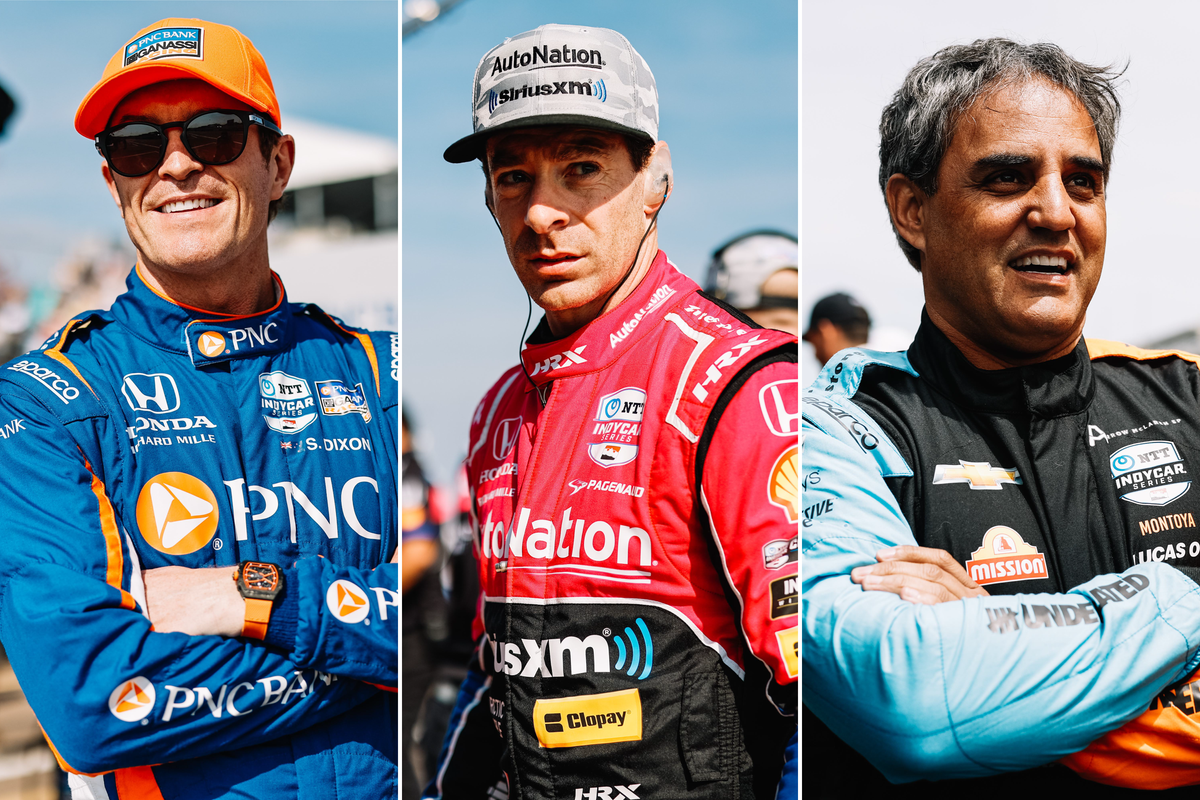
Last year, Twin Checkers created the IndyCar Ratings Index (IRI). It's an RPI-derivative ranking of IndyCar drivers. Full access to the database is only available to Twin Checkers' Paid Subscribers.
So far, we've catalogued it through the 2013 IndyCar season. The plan is to go back as far as history will let us, with hopes of chronicling every IndyCar season ever.
To say the series looks like it did in 2013 would be admitting you haven't watched a lap. The cars themselves have evolved with three different aero kits and the creation of the aeroscreen. That's not to mention the different tracks, teams and drivers that have come and gone in the last decade.
Seventy-six drivers completed at least three races in one season — the minimum requirement for the IRI. Some were so good only one season in the series was necessary to put them on top and highly rated.
However, faced with the same challenges as their peers, the top ten drivers since 2013 proved no matter which challenge the IndyCar Series threw their way they could wheel their car to a great finish.
Honorable Mentions:
Graham Rahal: IRI average: 0.5041 over 10 years; Colton Herta: 0.5161 over 4 years; Scott McLaughlin: 0.5182 over 2 years.
Graham Rahal broke .500 to be 13th overall. Recent inconsisteny and some declining performances kept him just outside the top ten. Herta and McLaughlin, 12th and 11th, have proven their skills in just the last few years. McLaughlin almost made the top ten after two stellar years for Team Penske. Herta's inconsistency finishing races — a factor in the IRI — likely keep him out of this top ten.
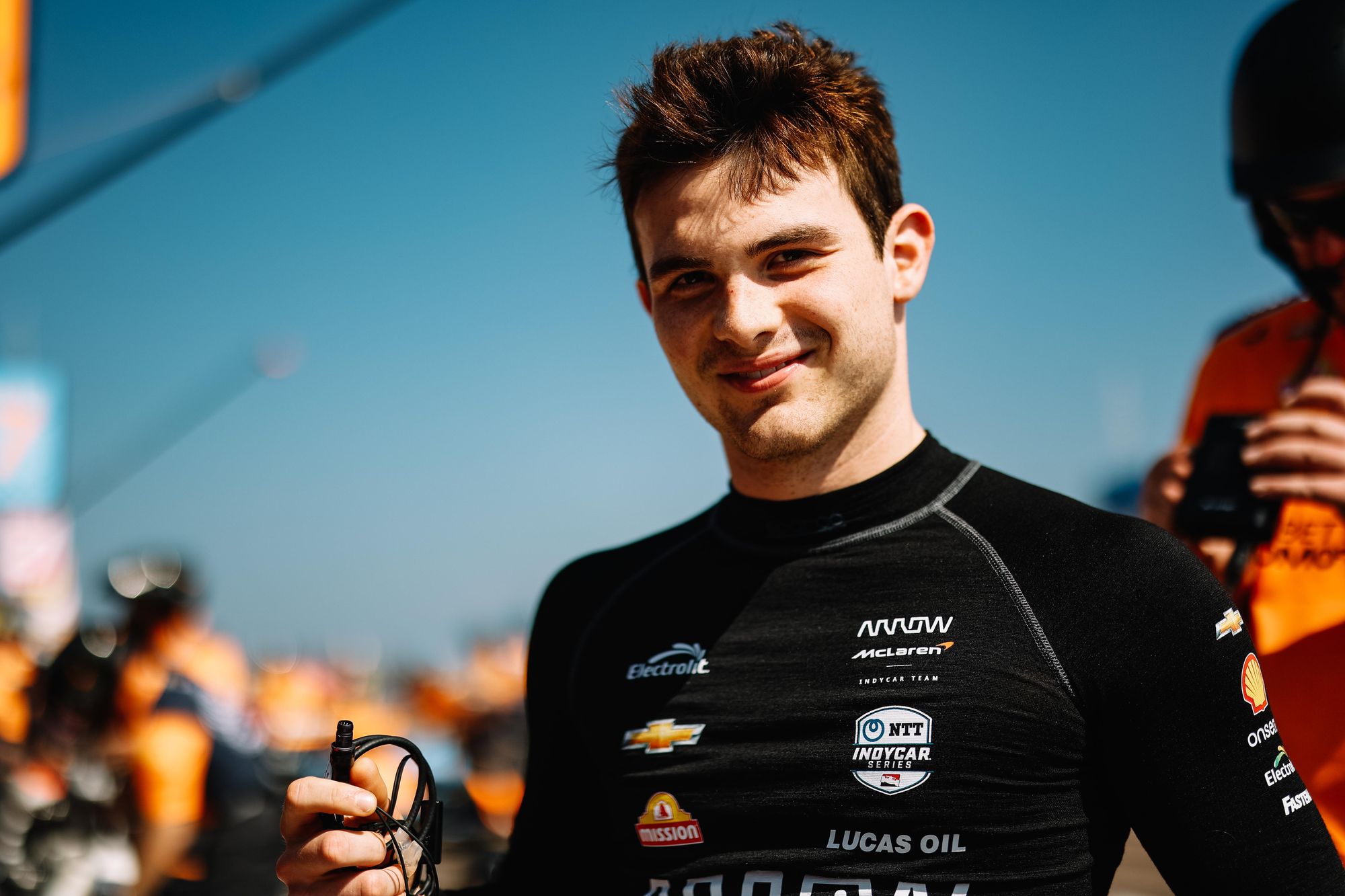
10. Pato O'Ward
0.5346 IRI avg. over 4 years
O'Ward's IndyCar debut in 2018 saw him take a top ten finish, a sign he might be the real deal. In 2019 following sponsorship issues that curbed a full-time entry, he found a part time ride with Carlin Racing joining the team for 8 races — including the infamous 2019 Indianapolis 500 where he and two other Carlin-prepared cars, including that of Fernando Alonso, missed the race.
In 2020, he made his debut with McLaren. In the three complete seasons since he joined his No. 5 Chevrolet finished on the podium 13 times, including 4 race wins. He averages a 90.9% finishing rate, third best of the top ten, and finishes in the top five 36.5% of the time.
9. Dario Franchitti
0.5363 IRI avg. over 1 year
Franchitti's 2013 season came to a halt after career-ending injuries at the second Houston street race. Now an advisor and coach for Chip Ganassi Racing, Franchitti was good enough in 2013 to make the list.
Despite the fact his Indianpolis 500 wins and series championships aren't included in this timeframe, Franchitti finished in the top five in 38.9% of the races in 2013. That's good enough for sixth best of all drivers from 2013-22.
8. Alexander Rossi
0.5373 IRI avg. over 7 years
Rossi's fuel economy run in the 2016 Indianapolis 500 may be his biggest achievement to date, but his astounding consistent competitiveness puts him in good positions most race weekends.
Rossi's 59.1% top ten rate and 33.8% top five rate mean he was a stealthy championship threat for many of the last seven years — and a loud threat to win at Indianapolis.
The end of this time frame coincides with a decline in performance at Andretti Autosport, the team where Rossi spent his first seven years in the series. Despite that, he finished his Andretti tenure with 8 wins and 29 podiums. Now joining forces with No. 10 on this list O'Ward at McLaren, Rossi is in great position to win a title in the next decade.
7. Alex Palou
0.5384 IRI avg. over 3 years
Palou suprised everyone to win the 2021 IndyCar Series championship in his second season — his first with Chip Ganassi. In that season he had a top five percentage of 62.5% and stayed out of trouble to gather points when other contenders flamed out.
Frankly, his good-but-not-great rookie season at Dale Coyne Racing in 2020 keep him from breaking into the top five of this list. That being said, his rookie season wasn't all that bad. It just wasn't stellar.
His relatively short time with Chip Ganassi has been special, even if a little tense.
6. Simon Pagenaud
0.5796 IRI avg. over 10 years
Pagenaud is the first of four drivers on this list to have completed the three race IRI minimum in all ten seasons. In that time, Pagenaud has driven for three teams — Schmidt Peterson Hamilton Motorsports, Team Penske and Meyer Shank Racing.
In all three rides he displayed a talent for limiting DNFs and getting into the top ten. Pagenaud averaged a 67.3% top ten rate and a list-leading 94% finishing rate. His 2016 series title and 2019 Indy 500 win are the highlights, but Pagenaud was the most reliable driver on this list. If you were his car owner, he would bring a car home — a skill which can turn your bad days into good ones and your good days into great ones.
The only blemish is his 35.9% top five rate; one that countless drivers can only dream of, but one that brings down his overall IRI.
His 2017 runner-up season is tied for the best recorded full season in the IRI so far with a 0.85. The only thing that kept him from winning the title that year was Josef Newgarden, who scored more points with more wins despite having less top fives.
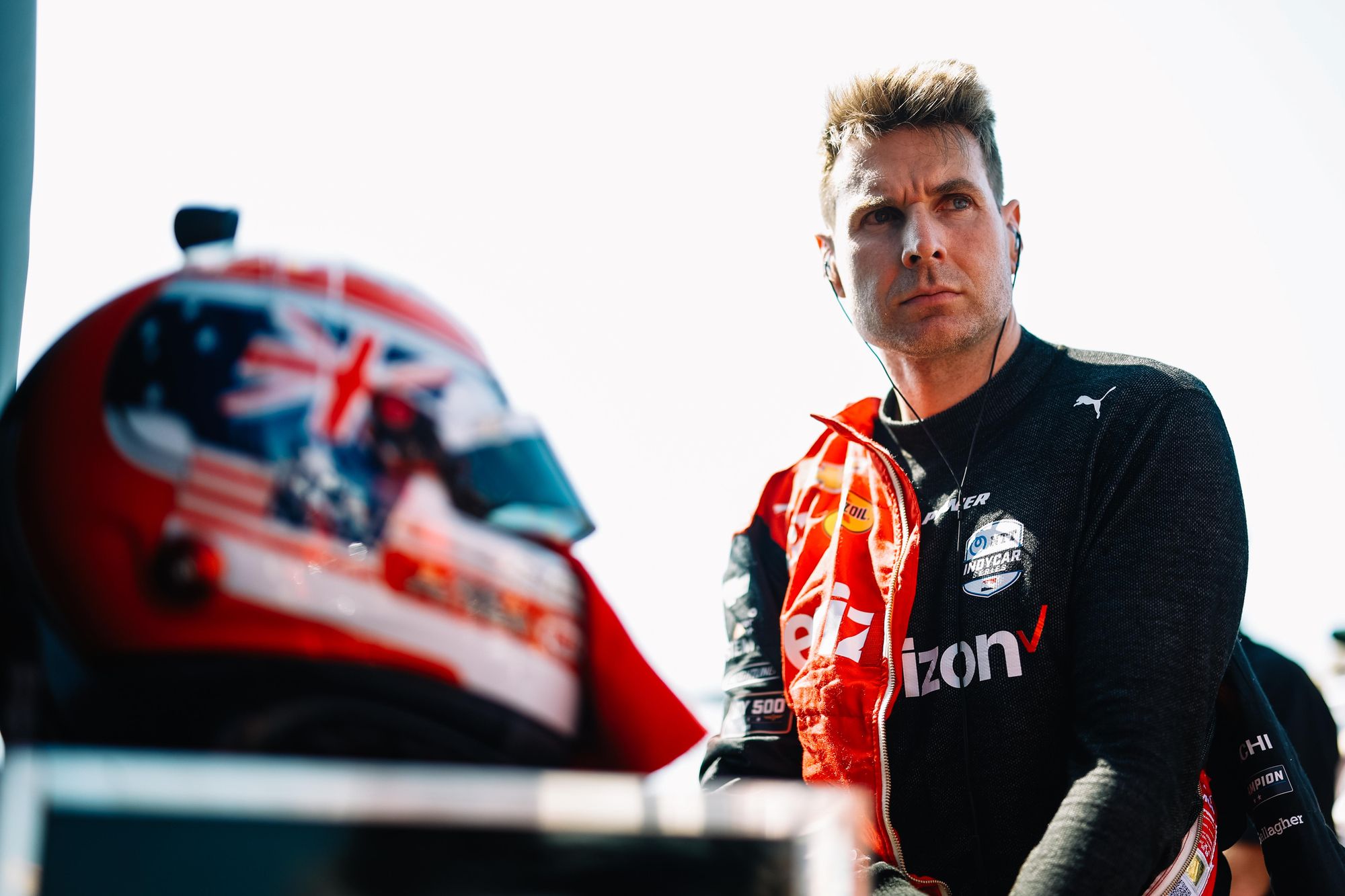
5. Will Power
0.6019 IRI avg. over 10 years
The 15-year veteran on Team Penske, Power won his second series championship in 2022. Only once in the last decade did he finish outside the top five in points. He scored 60 podiums and 23 race wins during that time, and last year he broke Mario Andretti's longtime pole record in the season finale at Laguna Seca.
Power averaged a third-best 44.7% top five rate during the last decade. His top ten rate and finishing rate trail behind Pagenaud, but his consistent excellence more than makes up the difference.
4. Josef Newgarden
0.6067 IRI avg. over 10 years
Newgarden is squarely in his prime, and his performances over the last decade have already place him among the all-time best drivers in IndyCar. He won two championships and finished runner-up three times from 2013-22. He finished inside the championship top five for seven consecutive seasons.
Newgarden averaged a 42.7% top five rate and a third-best 68% top ten rate. The only thing Newgarden could have done better was finish more races, just missing the 90% finishing rate mark with 89%.
3. Juan Pablo Montoya
0.6152 IRI avg. over 3 years
There's a serious question any motorsports fan should ask themselves when they hear Juan Pablo Montoya's name: is he the most underrated driver in racing history? His own curiosity and desire to drive as many racecars as fast as he could likely make him an afterthought to some, but he won in everything: NASCAR, IndyCar and even Formula One.
For this most recent decade, Montoya's 2014-16 seasons with Team Penske are counted — the three directly following his stint on Chip Ganassi's NASCAR team. He won 4 times, finished on the podium 12 times and finished with a top five rate of 44%.
Montoya was a special talent. He remains alongside Graham Hill as the only drivers to win the Monaco Grand Prix and the Indianapolis 500. He hasn't won the 24 Hours of LeMans yet to put him into Triple Crown territory, but Montoya might still have it in him.
2. Robert Wickens
0.6479 IRI avg. over <1 year
Perhaps the most tragic story on this list, Wickens ran less than one season before suffering a serious injury that has kept him off the IndyCar grid.
His 2018 rookie season was on track to put him in contention for a championship top five, even a top three if everything went well, but a lap 6 crash at Pocono left him paralyzed from the waste down.
Wickens ended his 14 race IndyCar career with a 50% top five rate and 71.4% top ten rate, both good for second best among eligible drivers. Unfortunately, he will remain one of the biggest "what ifs?" of the modern-era IndyCar Series.
His 2018 IRI, though only 28th best among single seasons, puts him with the second best average among all drivers.
Wickens is an incredible story, and he has returned to competition in the Michelin Pilot Challenge touring car series with a special hand-operated throttle and brake. Despite his challenges, he won two races in 2022 with teammate Mark Wilkins.
1. Scott Dixon
0.7112 IRI avg. over 10 years
Dixon is arguably the greatest IndyCar driver of all time. He's a six-time champion and the 2008 Indianapolis 500 winner. Overall, he's won 53 races and 133 podiums.
From 2013-22, Dixon finished in the top five 56.2% of the time. That's by far the best in the series, and it's not even close. His top ten rate of 77.7% is mind boggling.
Dixon is one of the greatest race car drivers of all time. I'd argue this ten year snapshot isn't even his best. Regardless, he finished every season from 2013-22 in the top six in points, and only finished outside the top three 3 times. Appreciate him while you can.
Top Ten IndyCar Drivers of the Last Decade per IRI
| Rank | Driver | Avg. IRI | Top 5 rate | Top 10 rate | Finish rate | Years Eligible |
|---|---|---|---|---|---|---|
| 1 | Scott Dixon | 0.7112 | 0.562 | 0.777 | 0.912 | 10 |
| 2 | Robert Wickens | 0.6479 | 0.500 | 0.714 | 0.786 | 1 |
| 3 | Juan Pablo Montoya | 0.6152 | 0.440 | 0.646 | 0.898 | 3 |
| 4 | Josef Newgarden | 0.6067 | 0.427 | 0.680 | 0.890 | 10 |
| 5 | Will Power | 0.6019 | 0.447 | 0.620 | 0.862 | 10 |
| 6 | Simon Pagenaud | 0.5796 | 0.359 | 0.673 | 0.940 | 10 |
| 7 | Alex Palou | 0.5384 | 0.350 | 0.576 | 0.867 | 3 |
| 8 | Alexander Rossi | 0.5373 | 0.338 | 0.591 | 0.891 | 7 |
| 9 | Dario Franchitti | 0.5363 | 0.389 | 0.611 | 0.722 | 1 |
| 10 | Pato O'Ward | 0.5346 | 0.365 | 0.514 | 0.909 | 4 |


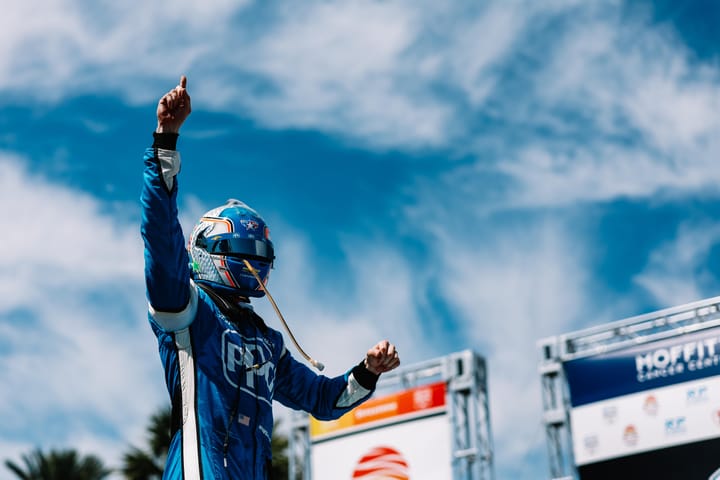
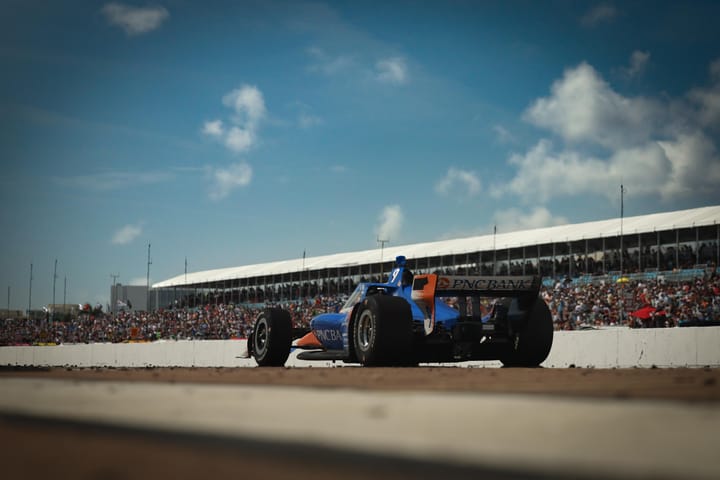

Comments ()